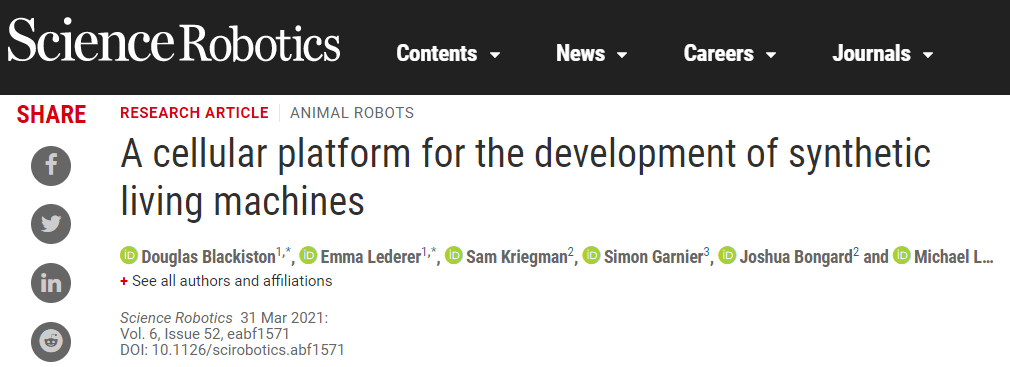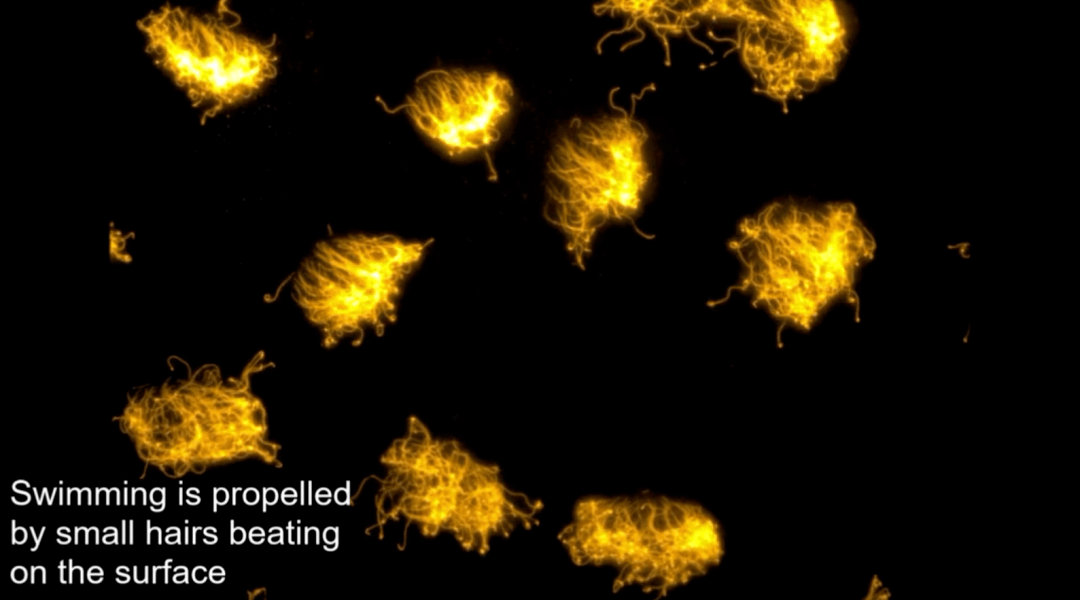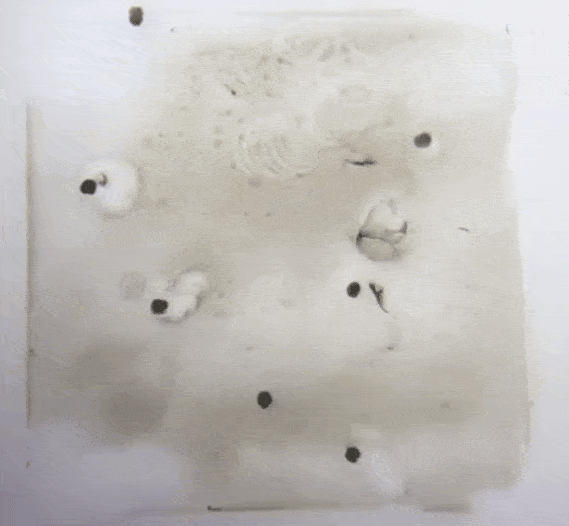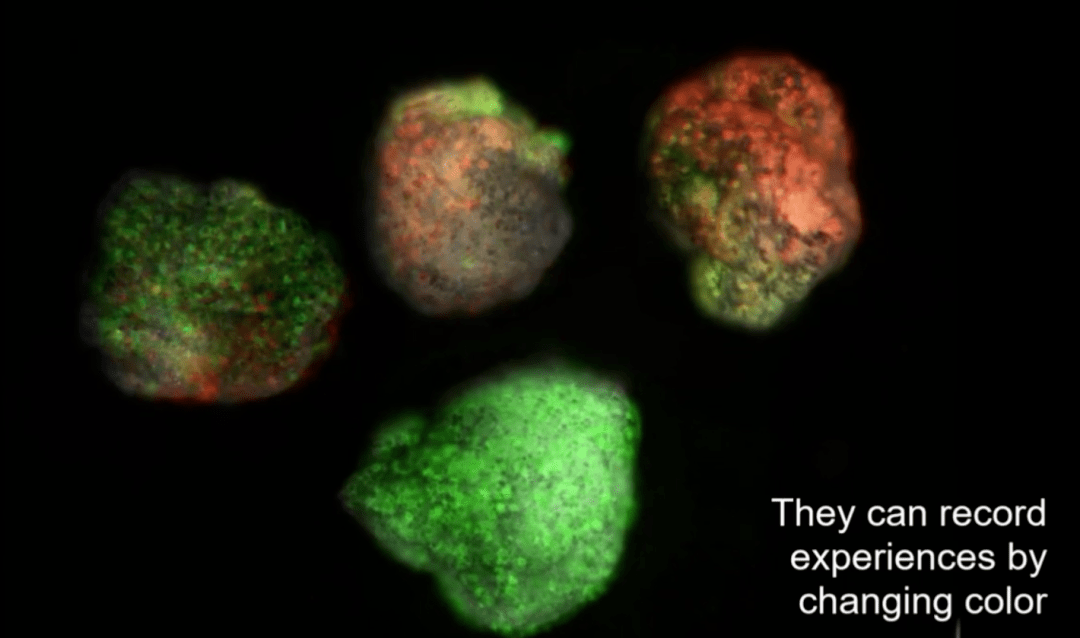
Xinzhiyuan Report
source:Academic headlines
【Xin Zhiyuan Guide】A new generation of Xenobots-They are assembled into the body automatically through single cells, and after assembly they can be moved without the aid of muscle cells, and even demonstrated the ability to store memories.
Last year, a team of biologists and computer scientists used frog cells to create a new type of miniature self-repairing biological robots called “Xenobots”-biological machines that can move around, push heavy objects, and even make Group behavior.
Today, the team has successfully developed a new generation of Xenobots on this basis-they are automatically assembled into a body through single cells, and can be moved without the aid of muscle cells after assembly, and even demonstrated the ability to store memories. The new generation of Xenobots robots move faster, can move in different environments, and have a longer service life. At the same time, they still have the ability to teamwork and can repair themselves after being damaged.

Researchers say that this versatility makes it possible for Xenobots robots to perform tasks in more environments. Relevant research results were titled “A cellular platform for the development of synthetic living machines” and were published in Science Robotics magazine on March 31.

(Source: Science Robotics)
Shuttle at will, just because of this special “leg”
It is understood that the researchers used artificially “modified” heart cells in the previous generation of Xenobots robots. Due to the natural rhythmic contraction of these cells, Xenobots robots have the ability to move around.
In contrast, the new generation of Xenobots robots adopts a “bottom-up” approach. The extracted frog stem cells self-assemble and grow into spheroids. The cells in some spheroids will differentiate to produce cilia-like tiny hairs after a few days. Protrusions, these protrusions can move back and forth or rotate in a specific way.
The corresponding author of the paper, director of Allen Discovery at Tufts University, and professor of biology, Michael Levin, said: “We are witnessing the plasticity of cell clusters. Although these frogs have completely normal genomes, we use their cells to construct A new’body’ completely different from the default state.”
At the same time, these cells can also reuse their genetic coding hardware to achieve new functions, such as using cilia to achieve movement. Even more surprising is that they can not only take on new roles spontaneously, but also create new physical behaviors without the need for long-term evolutionary selection of these characteristics. ”

Figure | Xenobots move through cilia and show teamwork ability
In order to test the ability of a single Xenobots to move in different environments, the researchers constructed different experimental environments from a completely open field to a restricted capillary with an inner diameter of 580nm. In all cases, except for some Xenobots that were challenged in narrow passages, Xenobots were able to move in space.
Under certain circumstances, Xenobots may move in the opposite direction. The reason is that the intracellular and tissue-wide polarity is established by cell rearrangement during the self-assembly stage created by Xenobots, and cannot be changed on a short time scale. Therefore, the rapid changes observed in the study may be due to real-time control of cilia, such as changes in the beating frequency of individual polyciliated cells, rather than changes in structural polarity.
Like many unicellular and multicellular organisms that use cilia for exercise, this exploratory behavior (spontaneous changes in exercise) may be affected by random internal physiological processes and micro-changes in the environment, such as spontaneous currents in an aqueous medium.
In the experiment, when the channel width of the “maze” is reduced to 2mm, Xenobots will continuously hover around a wall of the maze. According to observations, most Xenobots tend to exhibit an elliptical movement pattern. This behavior may be due to the wall inhibiting the completion of the elliptical path, which in turn drives the final directional movement.

Figure | Xenobots can pass through a variety of terrains including mazes
In addition, the researchers placed Xenobots on one end of a 2cm capillary with an inner diameter of 580nm. Unexpectedly, 42% of the tested Xenobots were able to pass through capillaries end to end. All individuals exhibiting movement successfully passed through the entire capillaries, and none of them stayed or reversed in the middle between the two ends. To movement.

Figure | Xenobots through tiny capillaries
The researchers said that these data are sufficient to show that Xenobots can successfully traverse various environments without having to go through a special configuration to adapt to a given scene, which is an ideal feature in many software robot applications.
Stronger collection and handling functions
At the same time, the researchers also modeled Xenobots of different shapes to determine whether they exhibit different behaviors when they are alone or in a “team”.
They hope that Xenobots can do some meaningful work in real life, such as life tools for removing microplastics in the ocean or pollutants in the soil. Facts have proved that the new generation of Xenobots is faster and better than the previous generation model in tasks such as garbage collection. They can clean the petri dishes in groups to collect larger iron oxide particles.

Figure | Xenobots work together to collect piles of tiny particles
In addition, Xenobots can also cover larger flat surfaces or move in narrow capillaries. These studies also show that in the future, computer simulation can optimize the additional functions of biological robots to adapt to more complex behaviors.
Also has a memory function? !
The core feature of robotics is that it can record information and use this information to modify the actions and behaviors of the robot. In order to confirm whether Xenobots have this function, the researchers designed a Xenobots with read and write functions, and they used EosFP’s fluorescent reporter protein to record this information. This protein usually emits green light, but when exposed to 390nm wavelength light, this protein can emit red light.
Researchers injected messenger RNA encoding the EosFP protein into the cells of frog embryos. Xenobots made from these stem cells have a built-in fluorescent switch that can record blue light exposure around 390nm.
To test the memory function of Xenobots, the researchers let 10 Xenobots move on a surface where a spot is illuminated by a 390nm beam. Two hours later, they discovered that three robots were emitting red lights, while the rest remained green, effectively recording the robot’s “travel experience.”

Figure | Xenobots can record information by changing the color
In the future, this proof of the principle of molecular memory can be extended to detect and record light, radioactive contamination, chemical pollutants, drugs, and diseases. The further design of the memory function can record multiple stimuli, allowing the robot to release compounds during the stimulus, or to change its behavior based on the sensation of the stimulus.
Bongard said: “When we give robots more functions, we can use computer simulations to design more complex behaviors and the ability to perform more complex tasks. We can not only report the conditions in their environment, but also modify and Repair the conditions in its environment.”
Even self-healing
What’s more surprising is that the new generation of Xenobots is also very good at “healing” their wounds, and can heal serious full length lacerations by half the thickness within 5 minutes of injury. In the experiment, all the injured robots eventually healed their wounds, restored their original shape, and continued to work as before.

Figure | Xenobots can repair itself
The researchers said that one of the advantages of biorobots is metabolism. Unlike metal and plastic robots, the cells in biorobots can absorb and break down chemicals and work like small factories such as synthesizing and expelling proteins. The entire field of synthetic biology previously focused on reprogramming single-celled organisms to produce useful molecules, and now it can be used in these multi-celled organisms.
Like the previous generation, the upgraded Xenobot robot can survive in the embryonic energy store for up to 10 days and run tasks without additional energy. However, if they are kept in a nutritious “soup”, they can also run at full speed for several months.
Before, Levin introduced a wonderful description of biological robots in a TED talk, and he also described what we can learn from these biological robots. He not only described the great potential of micro-biological robots to perform effective tasks in the environment or potential therapeutic applications, but also pointed out the most valuable benefits of this research, using robots to understand how individual cells gather, communicate, and specialize to create greater The organism. This is a new model system that can provide a basis for regenerative medicine.
The researchers said that Xenobots and subsequent alternative versions are also expected to provide information on how ancient single-celled organisms evolved into multicellular organisms, as well as the origin of information processing, decision-making, and cognition in biological organisms.
Reference materials:
https://now.tufts.edu/news-releases/scientists-create-next-generation-living-robots
http://dx.doi.org/10.1126/scirobotics.abf1571




























































You must log in to post a comment.